How To Install and Maintain Small Wind Turbines To Power Your Home
By HeyHome • November 27, 2023
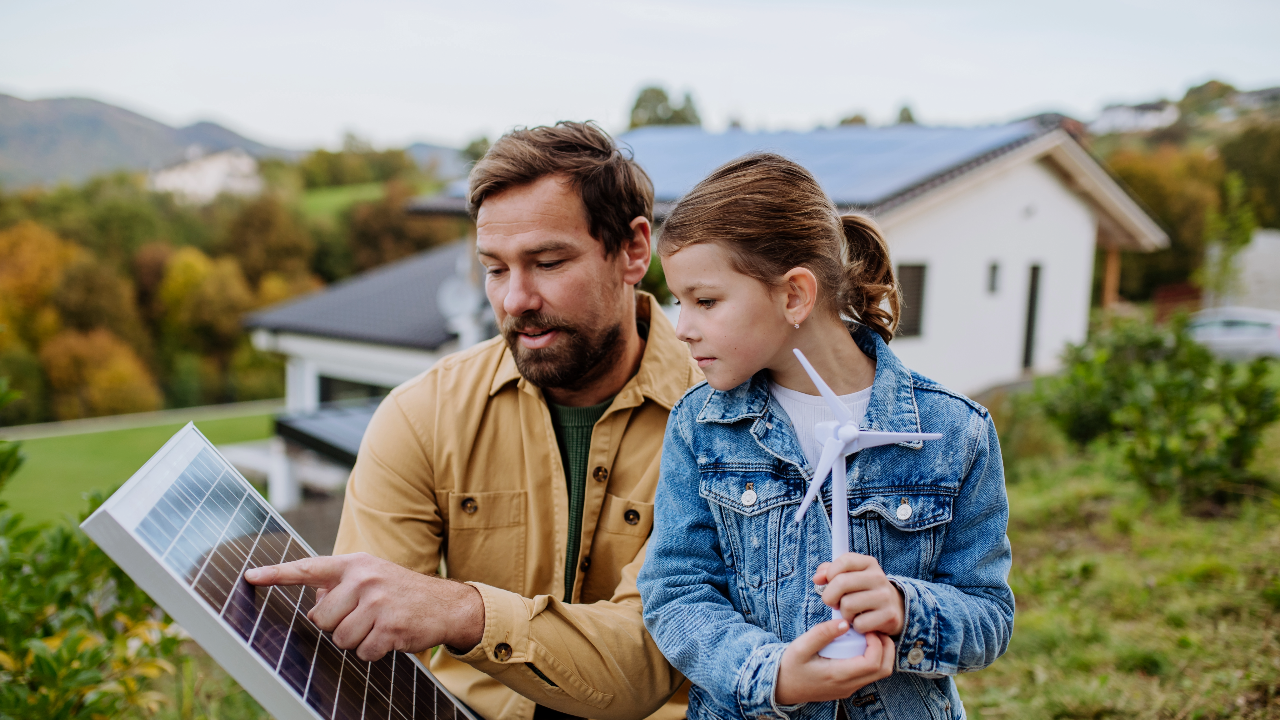
The shift towards sustainable living has brought wind power to the forefront of renewable energy solutions, especially for homeowners. As we increasingly seek ways to reduce our carbon footprint and embrace energy independence, understanding the benefits of home wind turbines becomes more critical than ever. This introduction serves as a gateway to the world of residential wind energy, outlining its benefits and the growing importance of renewable sources.
Understanding the Benefits of Home Wind Turbines
Installing a wind turbine for home use presents a plethora of advantages:
- Renewable Energy Source: Wind is an abundant, natural resource that converts to electricity without harmful emissions.
- Cost-Effectiveness: Despite the initial setup cost, wind turbines offer significant long-term savings on energy bills.
- Energy Independence: Generating your own power reduces dependence on grid-supplied electricity, shielding you from energy price volatility.
- Environmental Impact: Harnessing wind energy plays a substantial role in reducing your ecological footprint.
The Growing Importance of Renewable Energy Sources
In a world grappling with climate change, renewable energy sources like wind energy have become vital. They offer a sustainable alternative to fossil fuels, helping to:
- Combat Climate Change: By reducing greenhouse gas emissions.
- Promote Sustainability: Encouraging the use of endless natural resources.
- Foster Energy Security: Reducing reliance on imported fuels.
Moreover, advancements in technology are making small wind turbines more efficient and affordable, opening doors for widespread residential use. Whether it's a stand-alone system or a grid-connected wind turbine, the potential for home wind turbines in contributing to a greener planet is immense.
As we explore further, we'll delve into the specifics of choosing, installing, and maintaining a wind turbine, ensuring you have all the information needed to make an informed decision about embracing wind energy at home.
Join our newsletter
Stay on top of the latest in landscaping and lawn care with one valuable tip right in your inbox every Saturday morning.
Understanding Wind Turbine Basics
The journey into harnessing wind energy begins with a basic understanding of what a wind turbine is and how it functions. This foundational knowledge is crucial when considering the implementation of a wind turbine for home use. Let’s explore the mechanics of wind turbines and the different types available for residential applications.
What is a Wind Turbine and How Does It Work?
A wind turbine is a device that converts the kinetic energy of wind into electrical energy, a process that is key in the production of renewable energy. The basic components include rotor blades, a shaft, and a generator. Here’s how it works:
- Wind Interaction: The turbine’s blades capture wind energy. As the wind blows, it causes the blades to spin, turning the rotor.
- Mechanical to Electrical Conversion: The rotation of the rotor spins a shaft connected to a generator. This mechanical energy is then converted into electrical energy by the generator.
- Energy Utilization: The electricity generated can either be used immediately, stored, or fed into the power grid.
Different Types of Wind Turbines: Exploring the Options
There are primarily two types of wind turbines, each suited to different environments and needs:
- Horizontal-Axis Wind Turbines (HAWTs):
- Design: Most common design, resembling traditional windmills, with blades that rotate around a horizontal axis.
- Placement: Typically installed on tall towers to capture more wind.
- Suitability: Best for areas with steady wind conditions. Ideal for rural or suburban environments.
- Vertical-Axis Wind Turbines (VAWTs):
- Design: The blades rotate around a vertical axis. Unlike HAWTs, they don’t need to be facing the wind to be effective.
- Advantages: More versatile in urban or residential settings where wind conditions are variable.
- Efficiency: Generally less efficient than HAWTs but more adaptable to changing wind directions.
Each type has its unique benefits and limitations. The choice between a HAWT and a VAWT depends on factors like your location’s wind profile, spatial constraints, and energy needs. For those considering a smaller-scale implementation, small wind turbines offer a balance between efficiency and practicality, making them a popular choice for residential use.
In summary, understanding how wind turbines work and the different types available is the first step in harnessing wind power for your home. This knowledge will guide you in selecting the most suitable turbine to meet your energy needs and environmental goals.
Assessing Your Home for Wind Power
Determining if your home is a suitable candidate for a wind turbine involves evaluating your location and understanding local wind patterns. This assessment is vital to ensure that installing a wind turbine for home is not only feasible but also efficient in meeting your energy needs.
Evaluating Your Location: Is Your Home Suitable for a Wind Turbine?
Before investing in a wind turbine, consider the following factors:
- Wind Speed: Essential for turbine efficiency. Your area should experience average wind speeds of at least 5-6 meters per second.
- Space Availability: Adequate space is necessary for the turbine to operate safely and effectively. This includes distance from obstructions like buildings or trees.
- Local Zoning Laws: Check for any zoning restrictions or permits required for turbine installation in your area.
- Environmental Impact: Ensure that installing a turbine won’t harm local wildlife or ecosystems.
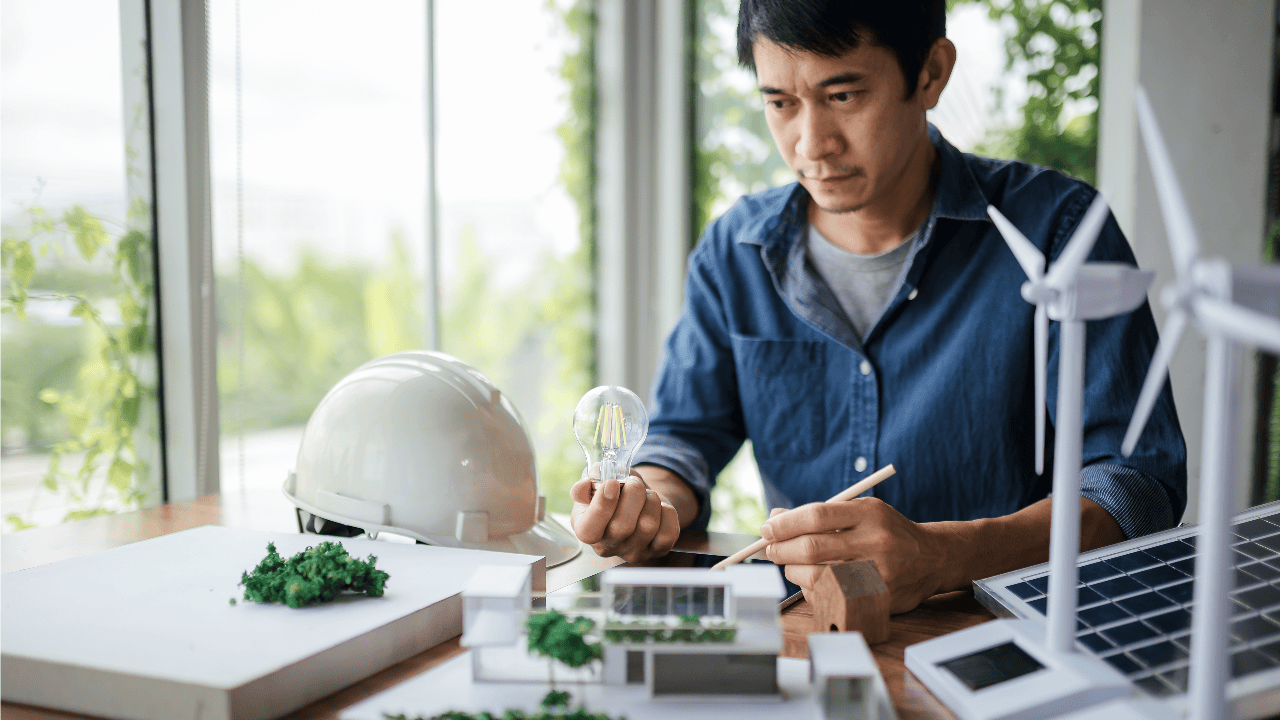
Understanding Wind Patterns and Average Wind Speed
A comprehensive understanding of the wind patterns in your area is crucial:
- Wind Resource Assessment: Use tools like anemometers or wind maps to gauge wind speeds and directions specific to your location.
- Seasonal Variations: Be aware of how wind patterns might change with seasons, affecting turbine performance.
- Professional Consultation: Consider hiring a professional to conduct a detailed wind assessment for accurate information.
By thoroughly evaluating these aspects, you can determine the viability of a wind turbine for your home, ensuring a wise investment into renewable energy.
Choosing the Right Wind Turbine for Home
Selecting the perfect wind turbine for your home is a pivotal decision that involves several key factors. This section will guide you through the considerations necessary to choose a turbine that best suits your energy needs and environmental goals.
Factors to Consider When Selecting a Wind Turbine
When choosing a wind turbine for home, consider the following aspects:
- Energy Requirements: Assess your home's energy usage to determine the turbine size required.
- Wind Speed and Patterns: The effectiveness of a turbine is largely dependent on the average wind speed and consistency in your area.
- Local Regulations: Be aware of zoning laws and permits required for turbine installation.
- Space Availability: Ensure you have sufficient space for the turbine, considering the height and rotor diameter.
- Noise and Aesthetics: Consider the noise level and visual impact of the turbine on your property and neighborhood.
- Budget and Incentives: Factor in the cost, including installation and maintenance, and explore any available financial incentives or grants.
Comparing Small Wind Turbines: What's Best for Your Needs
Small wind turbines are a popular choice for residential use due to their practicality and efficiency. Here's how to compare them:
- Horizontal vs. Vertical Axis: Horizontal-axis turbines are generally more efficient but require more space and consistent wind direction. Vertical-axis turbines are versatile for varying wind conditions and smaller spaces.
- Output Capacity: Match the turbine’s power output with your energy consumption needs.
- Durability and Maintenance: Consider the turbine's lifespan and maintenance requirements for long-term efficiency.
- Manufacturer and Warranty: Research different manufacturers and warranty options for reliability and support.
Selecting the right wind turbine involves balancing your energy needs, environmental impact, and budget considerations. By thoroughly assessing these factors, you can choose a wind turbine that not only contributes to your home’s energy efficiency but also aligns with your commitment to renewable energy.
The Installation Process
Installing a residential wind turbine is an intricate process that involves multiple stages, from site assessment to the final setup. It requires detailed planning, adherence to rigorous safety standards, and strict compliance with local regulatory requirements. This comprehensive guide provides a step-by-step approach to installing your home wind turbine, ensuring a safe, efficient, and compliant installation.
Step-by-Step Guide to Installing a Residential Wind Turbine
- Site Assessment: The first and most crucial step is assessing your location for wind turbine installation. This involves evaluating factors like local wind speed, available space, and proximity to obstructions such as trees or buildings. This assessment helps in determining the feasibility and the best type of turbine for your specific location, whether it’s a small wind turbine for less spacious areas or a larger model for open spaces.
- Obtaining Permits and Understanding Regulations: Prior to installation, it’s essential to familiarize yourself with local zoning laws and building codes. Obtain all necessary permits to ensure your wind turbine installation complies with regional regulations. This step is crucial to avoid legal complications and to ensure that your installation process is recognized by local authorities.
- Choosing the Right Turbine: Based on the initial site assessment, select a wind turbine that matches your energy requirements and the specifics of your location. Consider factors such as turbine size, power output capacity, and manufacturer reputation. It's important to balance your energy needs with environmental impact and budget constraints.
- Preparing the Site and Laying the Foundation: After choosing the suitable turbine, prepare your site. This involves clearing the area, ensuring it is free of any hindrances, and laying a strong foundation. The foundation must be robust and well-engineered to support the turbine’s weight and withstand various weather conditions.
- Assembling and Erecting the Turbine: With the foundation set, proceed to assemble the turbine's components, including the tower, rotor, and blades, following the manufacturer's instructions meticulously. Erecting the tower is a critical phase that often requires professional assistance, particularly for larger turbines. It’s essential to ensure that all components are securely attached and the structure is stable.
- Electrical Connections and Safety Checks: The final steps involve making electrical connections and conducting thorough safety checks. Hiring a certified electrician for electrical work is highly recommended, especially for grid-connected systems. Ensure all electrical connections are secure and compliant with electrical codes. Perform a comprehensive safety inspection of the entire system to identify any potential hazards.
Safety Considerations and Regulatory Compliance
- Professional Assistance: For complex aspects of the installation, such as electrical wiring and tower erection, professional assistance is not just recommended, but often necessary. Professionals bring expertise that ensures the safety and compliance of your installation.
- Adherence to Safety Standards: Throughout the installation process, adhere strictly to established safety standards. This includes wearing protective gear and following best practices to prevent accidents.
- Regular Maintenance and Inspections: Post-installation, it’s vital to regularly inspect and maintain your wind turbine. This ensures it continues to operate safely and at optimal efficiency.
- Staying Informed: Regulations and standards for wind turbine installations can evolve. Stay informed about any changes in your local area to ensure ongoing compliance and safety.
By meticulously following these steps and focusing on safety and compliance, you can successfully install a wind turbine at your home. This not only contributes to sustainable energy practices but also paves the way for long-term energy independence and savings.
Connecting to the Grid
Connecting your residential wind turbine to the power grid can be a complex process, involving understanding grid-connected systems and navigating various regulations and policies. This section will guide you through the essentials of connecting your wind turbine to the grid, ensuring that you are well-informed and prepared for this important phase.
Understanding Grid-Connected Systems
A grid-connected wind turbine system allows your home to have electricity both from your wind turbine and the utility grid. This setup provides numerous benefits:
- Energy Reliability: When wind speeds are insufficient for power generation, the grid supplies your electricity needs, ensuring consistent power availability.
- Excess Energy Utilization: Any excess power generated by your turbine can be fed back into the grid, often resulting in credits from your utility company.
- Reduced Storage Needs: Since you’re connected to the grid, the need for battery storage systems is significantly reduced, lowering costs and maintenance.
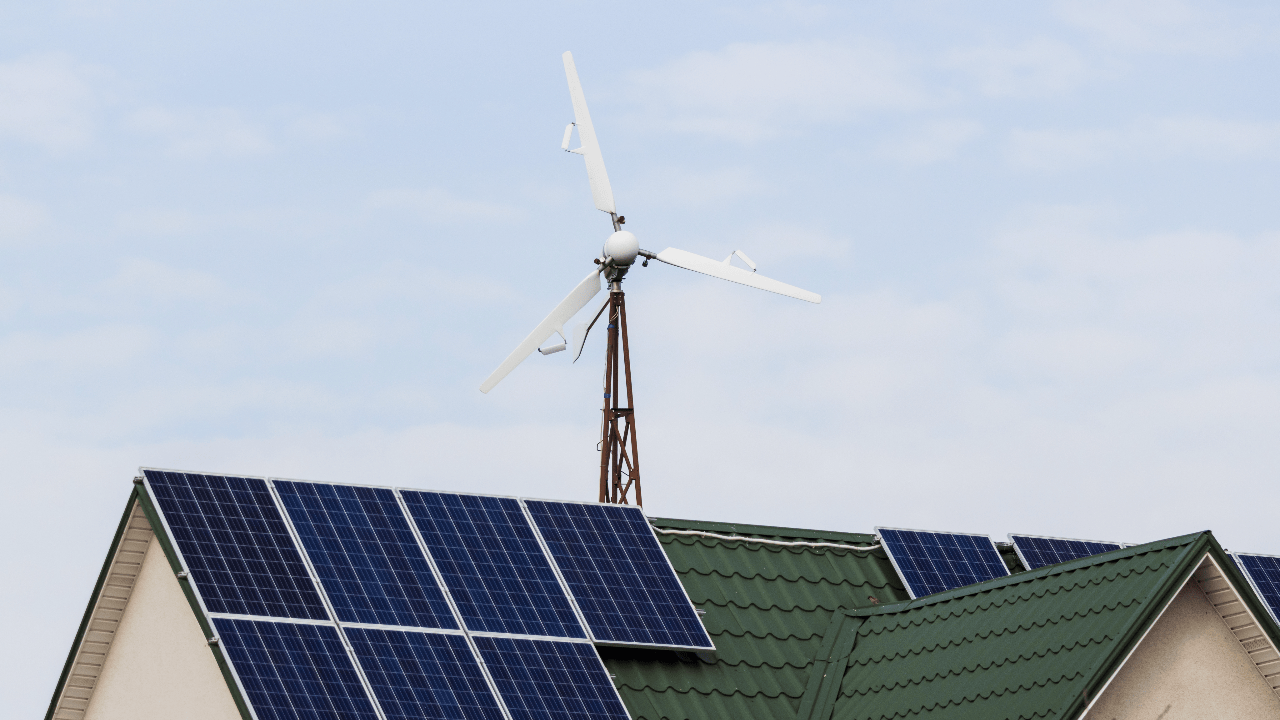
Navigating Local Regulations and Utility Company Policies
Understanding and complying with local regulations and utility company policies is crucial when connecting your wind turbine to the grid:
- Research Local Regulations: Local regulations can vary widely. Ensure you are aware of all the zoning, building, and electrical codes that apply to your wind energy system.
- Utility Company Policies: Each utility company has its own policies regarding grid-connected systems. These can include:
- Interconnection Agreements: Policies outlining the terms and conditions for connecting your system to the grid.
- Net Metering: Regulations governing how excess energy is credited back to you.
- Safety and Performance Standards: Requirements to ensure your system is safe and meets performance benchmarks.
- Permits and Inspections: Obtain all necessary permits and schedule inspections as required by local authorities and your utility provider.
- Professional Assistance: Consider consulting with professionals who specialize in renewable energy systems to help navigate these requirements.
Finalizing Your Grid Connection
Successfully connecting your wind turbine to the grid is a major achievement in your journey towards sustainable living. It marks a significant contribution to both your personal energy independence and the broader goal of a greener, more renewable energy grid. By understanding the intricacies of grid-connected systems and diligently navigating the regulatory landscape, you can maximize the benefits of your wind turbine and play an active role in the renewable energy movement.
Maintenance and Care of Wind Turbines
Effective maintenance and care are pivotal in optimizing the performance and extending the lifespan of your wind turbine. A well-maintained home wind turbine not only ensures consistent energy output but also helps in averting potential malfunctions and costly repairs. This comprehensive guide will walk you through the routine maintenance tasks and provide insights into troubleshooting common issues.
Routine Maintenance Tasks for Your Wind Turbine
Ensuring the longevity and efficiency of your wind turbine involves several crucial maintenance routines:
- Visual Inspections: Conduct regular inspections of the entire turbine structure. Look for signs of wear, corrosion, or damage, especially after severe weather events. Pay particular attention to the blades and the tower.
- Bolt and Structural Integrity: Periodically check all bolts and fasteners. Ensuring that these components are tight and secure is critical for the structural integrity of the turbine.
- Lubrication is Key: Regular lubrication of moving parts, such as bearings and the rotor, is essential. This not only reduces wear but also prevents rust and corrosion.
- Blade Maintenance: The blades should be routinely inspected for any damage or buildup of ice, dirt, or debris. Clean blades are more efficient and less prone to wear.
- Electrical System Checks: Regularly examine the electrical connections, wiring, and inverter. Ensure that all electrical components are functioning properly and safely.
- Monitor Turbine Performance: Keep a close eye on the turbine's output and operational patterns. Sudden changes in performance can indicate underlying issues that require attention.
- Environmental Factors: Be aware of environmental changes or new obstructions (like growing trees or new constructions) that might impact the wind flow and turbine efficiency.
Troubleshooting Common Issues
Despite regular maintenance, you might encounter some issues with your wind turbine. Here’s how to address some of the common problems:
- Reduced Power Output: If you notice a decrease in energy production, first consider environmental factors like reduced wind speeds. Also, check for mechanical issues or obstructions that might be hindering the turbine's rotation.
- Noise and Vibrations: Unusual noises or vibrations often signal loose parts or imbalances. Thoroughly inspect the turbine for any loose components and ensure the blades are properly balanced.
- Electrical Glitches: For electrical issues, it’s usually best to consult a professional. Incorrect handling of electrical components can be dangerous and may cause further damage.
- Blade Damage: Inspect the blades for any visible damage, such as cracks or erosion. Damaged blades can significantly reduce efficiency and should be repaired or replaced.
- Preventive Checks: Establish a schedule for preventive maintenance checks. This proactive approach can help you identify potential problems before they become major issues.
By adhering to these maintenance guidelines and addressing issues promptly, your wind energy system remains not just operational but also efficient and safe. This routine care is a small but crucial step towards maximizing your contribution to renewable energy and ensuring a sustainable future.
Join our newsletter
Stay ahead of the curve in all things outdoor.
Get the inside scoop on the latest landscaping, lawn care, and fencing trends with 1 actionable tip every Saturday morning.
Maximizing Efficiency and Energy Output
To fully leverage the capabilities of your wind turbine, it's crucial to focus on optimizing its performance and continuously monitoring its energy output. This approach ensures you efficiently harness wind power, maximizing the renewable energy benefits for your home.
Enhancing the Performance of Your Wind System
Optimizing the performance of your wind energy system involves several strategies:
- Routine Maintenance: Regular maintenance is vital. This includes inspecting for damages, ensuring mechanical parts function correctly, and cleaning the blades to maintain aerodynamic efficiency.
- Strategic Placement: The location of your turbine significantly impacts its efficiency. It should be placed in an area with minimal obstructions and maximum wind exposure.
- Technological Upgrades: Keep abreast of advancements in wind turbine technology. Upgrading components like blades or generators can enhance overall efficiency.
- Aerodynamic Optimization: Adjusting blade pitch and ensuring rotor balance can improve the aerodynamic efficiency of your turbine.
Advanced Monitoring for Optimal Output
Regular monitoring of your turbine’s performance is key to achieving optimal energy output:
- Implement Monitoring Systems: Utilize advanced tools to track real-time data on wind speeds, turbine output, and overall performance.
- Data Analysis and Adjustment: Regularly review collected data to identify trends or issues affecting performance. Adjust settings as needed to optimize output.
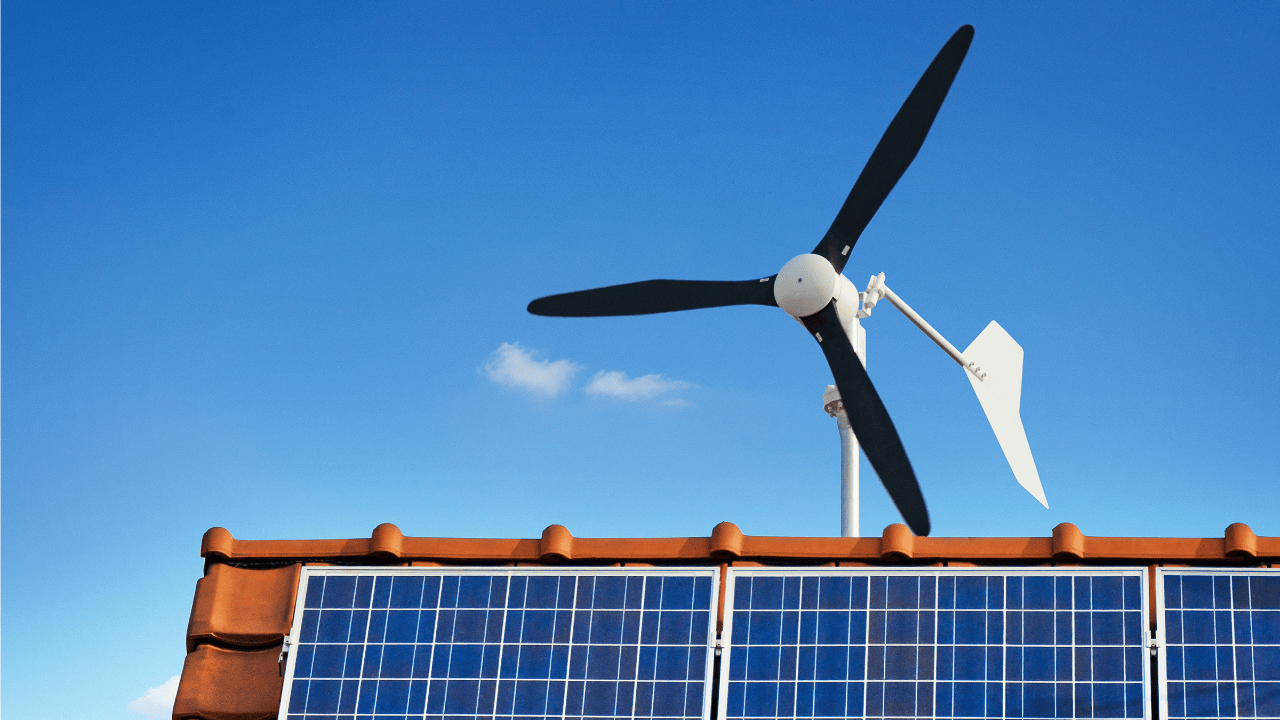
Adapting to Environmental Changes
Adaptability to environmental variations is crucial for maintaining turbine efficiency:
- Weather Adaptation: Be responsive to changing weather conditions, as they can significantly affect wind speeds and energy production.
- Seek Expert Advice: Consult with wind energy professionals for expert advice on adapting to environmental changes and enhancing turbine efficiency.
Long-term Efficiency Strategies
Maintaining long-term efficiency requires forward-thinking and continuous improvement:
- Invest in Research: Stay informed about the latest research and developments in wind turbine technology and efficiency.
- Community Learning: Engage with local wind energy communities to share experiences and learn from others’ best practices.
By focusing on these aspects, you ensure that your wind turbine operates at peak efficiency, contributing significantly to your home’s energy needs and the broader goal of sustainable living. Embracing these practices not only maximizes the energy produced but also solidifies your role in the renewable energy movement.
Financial Considerations and Incentives
Investing in a wind turbine, such as a home wind turbine, involves a careful evaluation of both the upfront costs and long-term benefits. Additionally, understanding the array of financial incentives available can make this sustainable investment more attainable and appealing. This extended section explores the costs, benefits, and financial aids related to installing a wind turbine, integrating essential keywords for better relevance and comprehension.
The Costs and Benefits of Installing a Wind Turbine
When considering a wind turbine for your home, here are the key financial aspects to consider:
- Initial Investment: The upfront cost includes purchasing the turbine, installation fees, and any necessary additional equipment. For those considering a small wind system, costs can vary depending on the size and specifications of the turbine.
- Operational Expenses: While wind turbines generally have lower operational costs, regular maintenance is crucial. These costs ensure that your turbine efficiently harnesses the wind blows and converts them into energy.
- Energy Bill Savings: One of the most tangible benefits of installing a wind system is the potential reduction in your energy bills. By generating your own electricity, especially in areas with consistent wind speed, you can significantly lower your reliance on grid-supplied electricity.
- Increased Property Value: Homes equipped with renewable energy systems, like wind turbines, often see an increase in their market value, appealing to the growing number of eco-conscious buyers.
- Environmental ROI: Beyond the monetary aspect, the environmental return on investment is substantial. By using renewable sources like wind, you contribute to reducing carbon emissions and promoting sustainable living.
Exploring Grants, Tax Incentives, and Other Financial Aids
There are several avenues to explore that can help offset the initial costs of a wind turbine:
- Government Grants and Subsidies: Many governments encourage renewable energy adoption by offering grants or subsidies, particularly for small wind energy systems.
- Tax Incentives: Tax benefits, such as credits or deductions, are often available for homeowners who install renewable energy systems. These incentives can significantly reduce your overall investment cost.
- Utility Company Programs: Some utility companies provide rebates or special programs for homes that generate their own renewable energy, like those with home wind turbines.
- Green Financing: Explore green financing options, which are specially tailored for renewable energy projects. These loans or financing plans often come with favorable terms and interest rates.
- Community Funding Initiatives: In some regions, community-based funding initiatives or group purchase programs can help reduce the cost of individual installations.
By thoroughly understanding these financial considerations and leveraging available incentives and aids, you can make your wind turbine project more affordable and beneficial. The initial costs can be mitigated by long-term savings, enhanced property value, and the positive environmental impact of harnessing wind power.
Environmental Impact and Sustainability
Wind turbines are not just about generating electricity; they are a symbol of a sustainable and environmentally-friendly future. This section explores the role of wind turbines in promoting sustainable living and provides a comparative analysis of wind power versus traditional energy sources.
The Role of Wind Turbines in Promoting Sustainable Living
Wind power is a cornerstone of sustainable living for several key reasons:
- Renewable Energy Source: Wind is a plentiful, renewable resource. Unlike fossil fuels, it does not deplete over time, making wind turbines a long-term solution for energy needs.
- Low Environmental Impact: Wind turbines produce electricity without emitting greenhouse gases or pollutants, reducing the environmental impact significantly compared to traditional energy sources.
- Energy Independence: By generating your own electricity, you reduce dependence on the grid and fossil fuels, moving towards greater energy independence.
- Land Use Efficiency: Wind turbines, especially small wind turbines designed for residential use, have a small footprint, allowing land to be used for other purposes simultaneously.
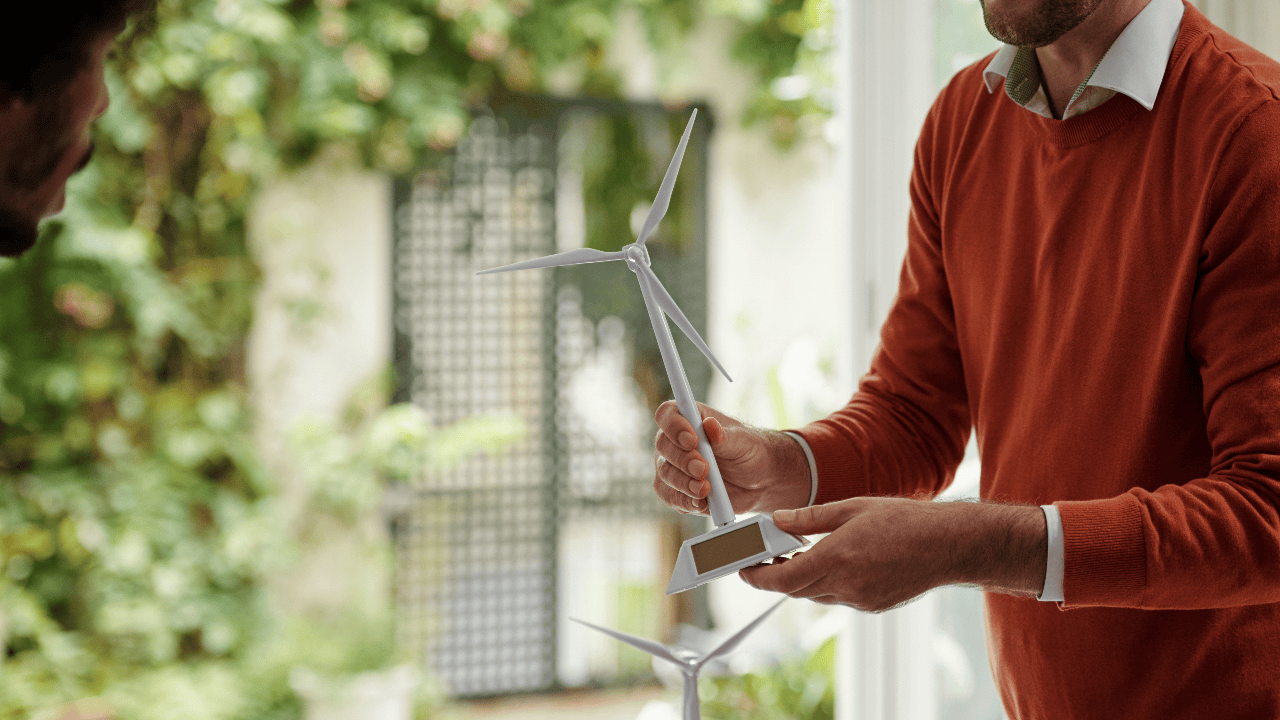
Wind Power vs. Traditional Energy Sources: A Comparative Analysis
Comparing wind energy to traditional energy sources reveals several advantages:
- Emission Reduction: Wind energy systems produce no emissions during operation, in contrast to fossil fuels that release carbon dioxide and other pollutants.
- Resource Efficiency: Wind energy harnesses a natural, abundant resource, unlike fossil fuels, which are finite and require extensive extraction processes.
- Cost-Effectiveness: While the initial investment for a residential wind turbine might be high, the long-term savings on utility bills and low operational costs make it cost-effective.
- Impact on Health and Environment: Traditional energy sources can have negative health impacts due to air and water pollution. Wind energy, being clean, does not pose such risks.
Embracing Wind Energy for a Greener Future
The transition to wind energy, particularly for residential use, is a step towards a more sustainable and environmentally-friendly lifestyle. By choosing home wind turbines, homeowners can contribute to reducing the collective carbon footprint, preserving natural resources, and paving the way for a greener future. While each energy source has its own set of challenges and benefits, wind power stands out for its minimal environmental impact and alignment with the goals of sustainable living.
Residential Wind Turbines FAQs
When considering a residential wind turbine, many homeowners have questions about their viability, cost, and potential drawbacks. Here, we address some of the most frequently asked questions to provide clarity and assist in making informed decisions.
Are Home Wind Turbines Worth It?
Home wind turbines can be a worthwhile investment, especially in areas with strong, consistent winds. They offer:
- Energy Independence: Reduce reliance on grid-supplied electricity and protect against fluctuating energy prices.
- Environmental Benefits: Contribute to reducing greenhouse gas emissions.
- Long-Term Savings: Although the initial setup cost can be high, the long-term savings on energy bills can be substantial.
Can I Buy a Wind Turbine for My Home?
Yes, you can purchase a wind turbine for your home. It's essential to:
- Assess Your Location: Ensure your area has sufficient wind resources.
- Understand Local Regulations: Be aware of any zoning laws or permits required.
- Select the Right Model: Choose a turbine that fits your energy needs and space constraints.
More information can be found at Buying a Home Wind Turbine.
How Much Does It Cost to Power Your House with a Wind Turbine?
The cost of powering a house with a wind turbine varies based on:
- Turbine Size and Type: Larger, more powerful turbines cost more but generate more electricity.
- Installation Costs: Including permits, equipment, and professional services.
- Ongoing Maintenance: Regular maintenance is required to ensure optimal performance.
Initial costs can range from a few thousand to tens of thousands of dollars, but the long-term energy savings can be significant.
What Are 3 Disadvantages of Wind Energy?
While wind energy has many benefits, there are some disadvantages:
- Intermittency: Wind doesn't blow consistently, which can lead to variable energy production.
- Initial Investment: High upfront costs for purchasing and installing a wind turbine.
- Space Requirements: Wind turbines require adequate space and are subject to zoning restrictions.
Despite these challenges, advances in technology and increasing support for renewable energy are making wind turbines a more feasible option for many homeowners.
Empowering Your Home with Wind Energy
As we conclude our comprehensive exploration of "How To Install and Maintain Small Wind Turbines To Power Your Home," it’s clear that wind energy is not just a technology of the future – it’s a practical solution for today’s energy needs. This section recaps the benefits and considerations of installing a home wind turbine and looks forward to the future of residential wind power.
Recap of the Benefits and Considerations of Home Wind Turbines
The journey into residential wind power comes with a plethora of benefits:
- Sustainable Energy Source: Wind turbines offer a clean, renewable source of energy, significantly reducing reliance on fossil fuels and lowering carbon emissions.
- Cost-Effective: Despite the initial investment in a small wind turbine, the long-term savings on electricity costs and potential financial incentives make it an economically wise choice.
- Energy Independence: Homeowners gain a degree of energy independence, safeguarding against energy price fluctuations and power outages.
- Enhanced Property Value: Properties with renewable energy systems, like home wind turbines, are often valued higher in the real estate market.
However, these benefits come with considerations:
- Location Suitability: Evaluating your location for wind speed and wind resource availability is crucial.
- Regulatory Compliance: Adhering to local zoning laws and building codes is a necessary part of the process.
- Maintenance Requirements: Regular maintenance ensures the longevity and efficiency of your wind system.
Looking Ahead: The Future of Residential Wind Power
The future of residential wind power is promising, driven by continuous advancements in technology and growing environmental awareness:
- Technological Innovation: Ongoing innovations are making wind turbines more efficient, reliable, and adaptable to various environments.
- Increased Accessibility: With the rise of financial incentives and decreasing costs, wind turbines are becoming more accessible to a broader range of homeowners.
- Community and Policy Support: Growing community interest in renewable energy and supportive government policies are likely to propel the adoption of wind power.
As we move towards a more sustainable and energy-independent future, the role of residential wind turbines becomes increasingly vital. By embracing wind power, homeowners not only contribute to environmental conservation but also take control of their energy production, setting a precedent for future generations.
Join our newsletter
Stay ahead of the curve in all things outdoor.
Get the inside scoop on the latest landscaping, lawn care, and fencing trends with 1 actionable tip every Saturday morning.